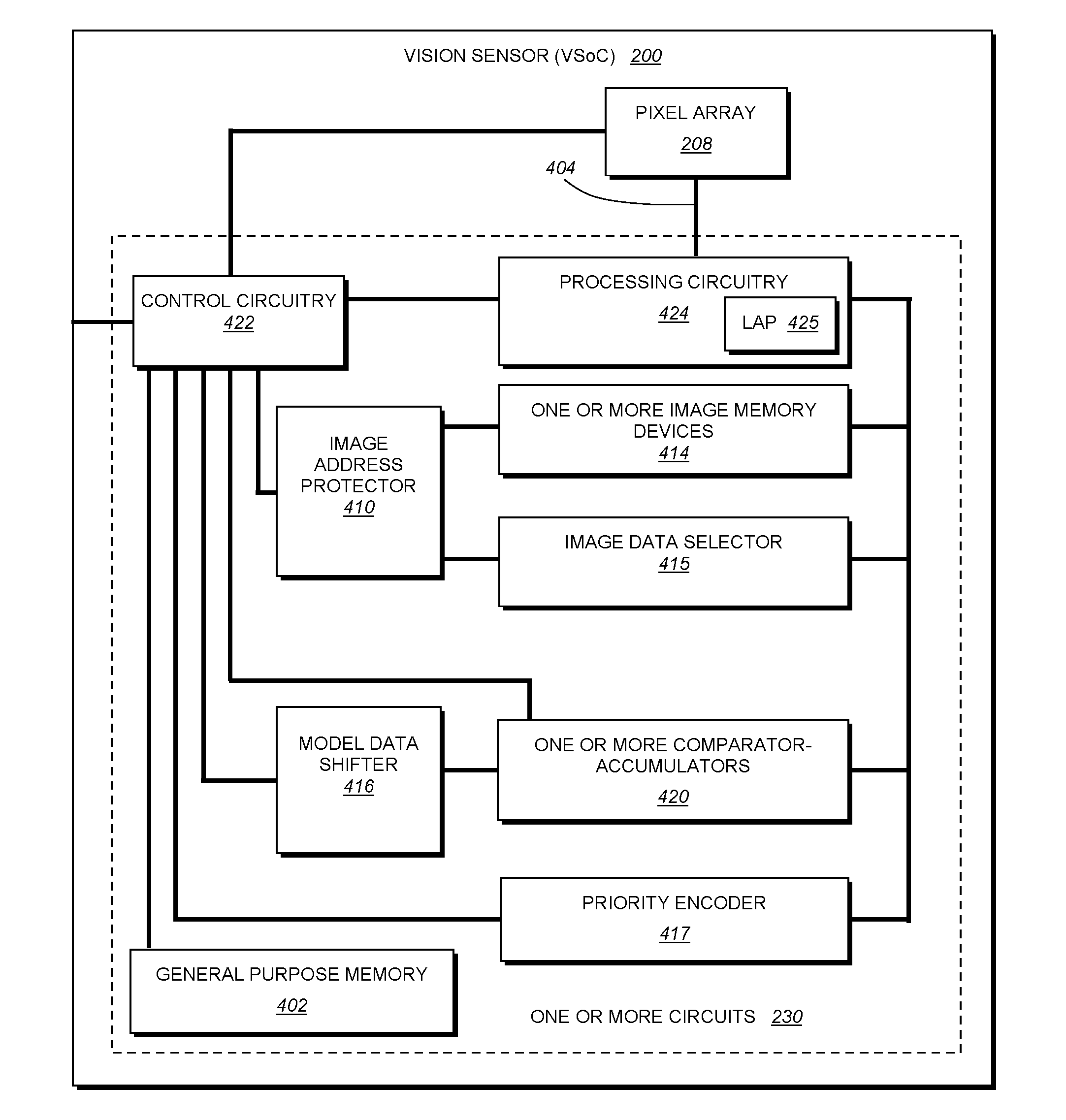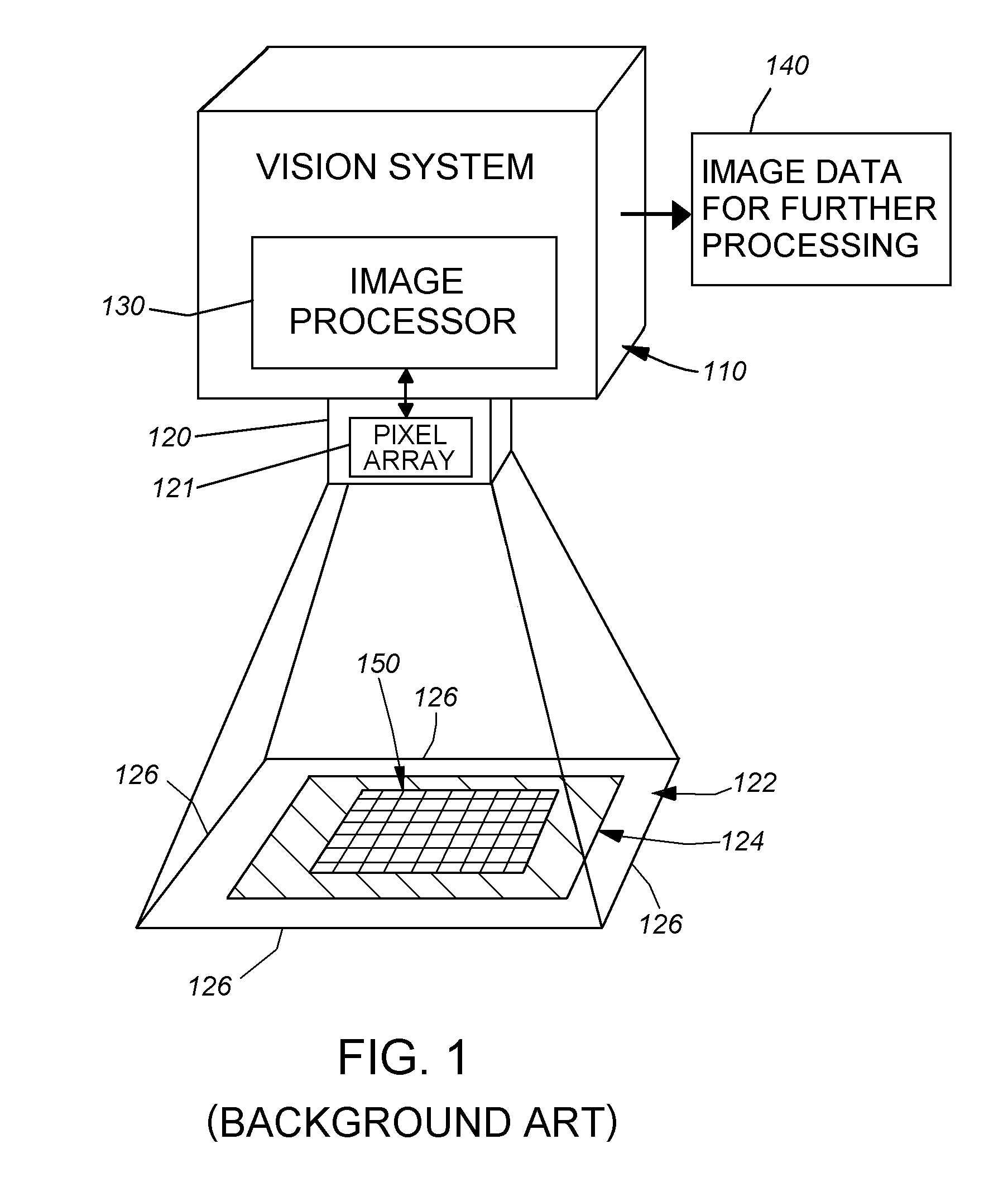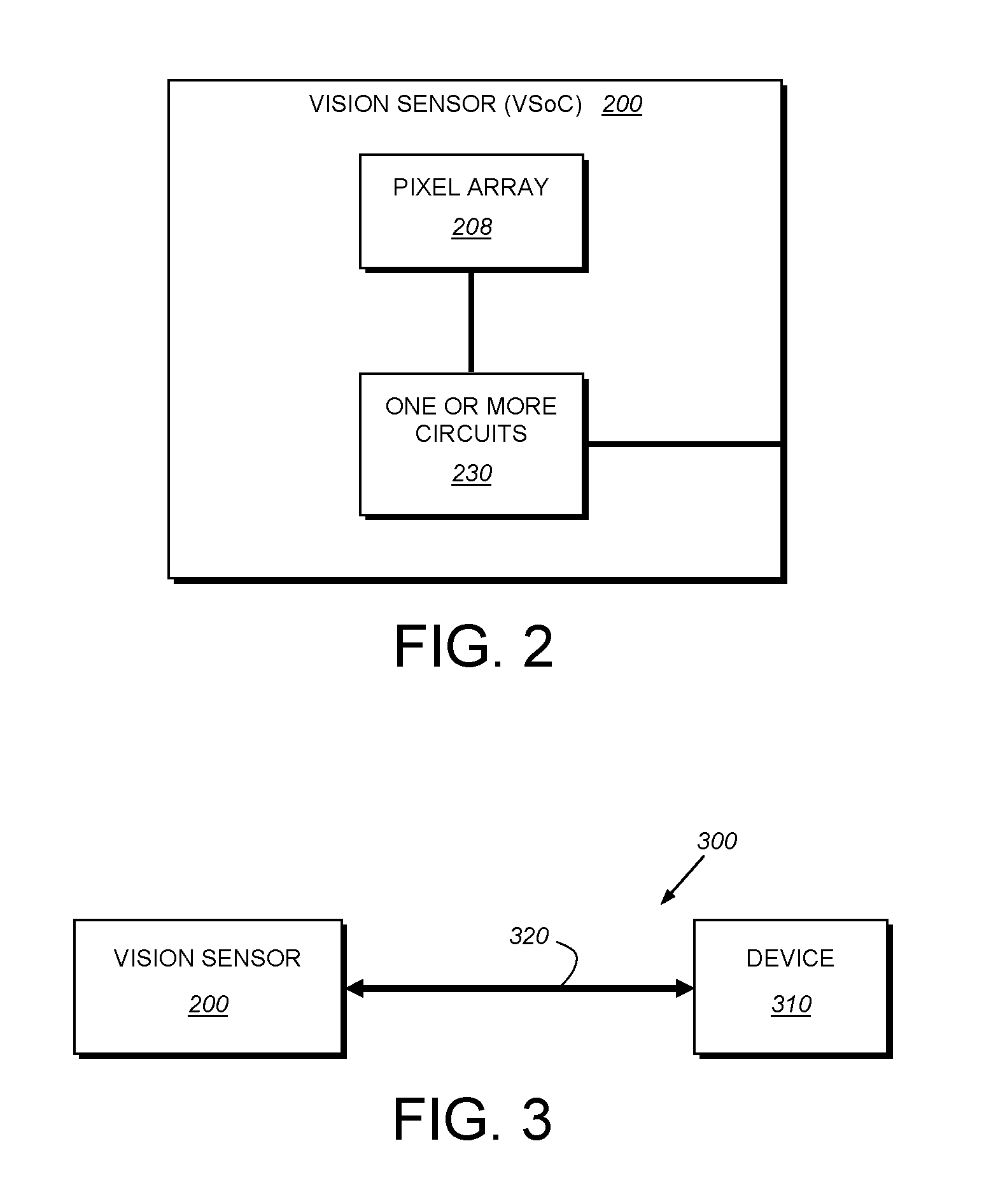System and method for processing image data relative to a focus of attention within the overall image
a processing system and image data technology, applied in the field of machine vision systems, can solve the problems of large processing overhead, inability to meet the required throughput rate and other system parameters, and the movement of data is expensive in terms of processing overhead, so as to save processing time and data storage overhead, and achieve high accuracy and fine alignment process
- Summary
- Abstract
- Description
- Claims
- Application Information
AI Technical Summary
Benefits of technology
Problems solved by technology
Method used
Image
Examples
Embodiment Construction
[0032]The illustrative system and method for processing discrete image data within an overall set of acquired image data, based upon a focus of attention, is adapted to operate with a vision system processor that defines an architecture capable of processing an entire row of data read-out from an interconnected pixel array in a discrete processing cycle (i.e. all data in a row being simultaneously processed with each clock cycle). To accomplish this, the overall processor is organized to include a wide on-bit data bus (for example a 1024×1 bus) between an image data storage memory (also having a storage array that is 1024 wide, and also termed herein a “data memory”) and the pixel array (in this example, a 1024×768 pixel array with 8-bit or 6-bit pixels). This memory is interconnected by another similarly wide (1024×1, for example) bus to the image processing component, which is organized to process the entire row simultaneously using, for example, single-instruction, multiple-data ...
PUM
 Login to View More
Login to View More Abstract
Description
Claims
Application Information
 Login to View More
Login to View More - R&D
- Intellectual Property
- Life Sciences
- Materials
- Tech Scout
- Unparalleled Data Quality
- Higher Quality Content
- 60% Fewer Hallucinations
Browse by: Latest US Patents, China's latest patents, Technical Efficacy Thesaurus, Application Domain, Technology Topic, Popular Technical Reports.
© 2025 PatSnap. All rights reserved.Legal|Privacy policy|Modern Slavery Act Transparency Statement|Sitemap|About US| Contact US: help@patsnap.com



